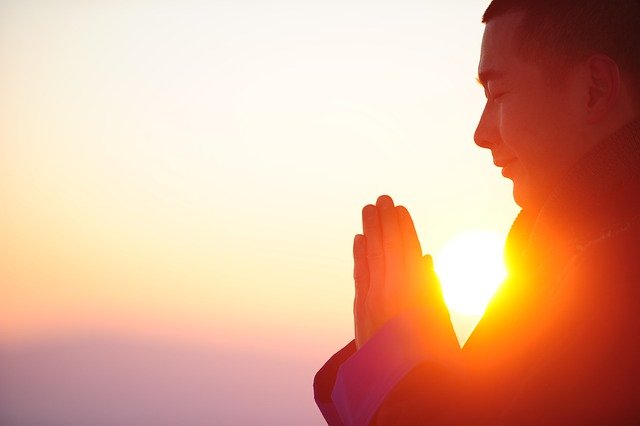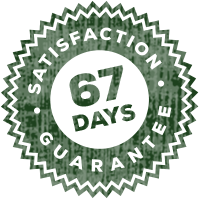For some, being stuck indoors with their family all day is, at worst, frustrating and inconvenient. But for some others, everything about shorter days and earlier nights triggers depression-like symptoms that can become debilitating to deal with. If that sounds like you, heads up—seasonal affective disorder is coming your way.
According to a study published in American Family Physician, approximately 4 to 6% of people worldwide suffer from seasonal affective disorder when the winter months set in. Also known as SAD, it is classed under the major depressive disorder umbrella, which is why it shares many similarities with depression. Are you feeling foggy too? Read our post, “Nootropics 101: How to Boost Your Brain with “Smart Drugs” + 3 Stacks for Beginners to Try” to clear your brain fog.
What Are The Symptoms Of Seasonal Affective Disorder?
Many people report SAD symptoms from as early as fall, peaking around January or February. Women tend to be more susceptible to this mood disorder than men, especially if they live away from the equator. You’re also more at risk if you already have a mood disorder.
It’s essential to differentiate regular winter blues from the more serious SAD. After all, we get sluggish and slow during winter as our bodies learn to cope with the cold. However, if you have four or more of the symptoms below, you may want to check with a healthcare professional to get yourself an official diagnosis.
- An intense craving for carbs and sugar
- Weight gain
- Sleepy, tired, and low-energy all the time
- Persistent low mood
- Demotivated and lost interest in hobbies
- Want to withdraw socially
- Feeling guilt, shame, and worthlessness
Not only that, but a primary criterion for mental health diagnosis is your regular function. Are you able to function somewhat regularly and fulfill your responsibilities regardless of how reluctant you are? Symptoms might also manifest differently for everyone—a small number of people experience a short “manic” period where they feel more energetic, sociable, and happy.

What Causes Seasonal Affective Disorder?
The leading theory for seasonal affective disorder is the lack of sunlight in the fall and winter months.
When you don’t get enough sunlight, your hypothalamus won’t be able to function correctly. It’s responsible for maintaining your body’s internal balance and has many vital functions, including regulating your heart rate, appetite, sex drive, and hormone secretion.
Experts suggest that SAD is caused by the effects of your sun-deprived hypothalamus on hormone production. For one, people with SAD often have lower serotonin levels during winter, which affects their mood, appetite, and sleep quality. Not only that, but your hypothalamus also triggers a higher melatonin production, which wreaks havoc on your circadian rhythm and causes you to feel tired all day.
7 Ways To Beat Seasonal Affective Disorder
Although SAD is considered a type of depression, it’s not as intense as major depressive disorder. For the most part, you can alleviate most of the symptoms without using antidepressants and therapy. To help you get started, here are seven small lifestyle changes you can make to beat seasonal affective disorder.
Get Moving
As it does with other forms of depression, exercising regularly can significantly alleviate SAD symptoms. When you’re engaging in high-intensity exercise, your body releases endorphins, a feel-good hormone that causes the famed “runner’s high”. So whenever you can, try to do your daily exercise routine outside when the sun is up.
We know—it’s challenging to get out of bed when you’re combating winter depression, let alone doing a 10k run. If you can’t bring yourself to jog around the block, you can start small and work out for five minutes at a time. Low-intensity exercises promote the secretion of growth factors and neurotrophic, which fosters better nerve connection, improves brain function, and elevates your mood.

Let The Sunshine In
Since a lack of exposure to sunlight can trigger SAD, you’ll want to go outside as much as you can during the day. Even if it’s cold and dreary, it’s much better to bundle up and take as much advantage of the high noon sun as you can—you may be able to get some exercise in too!
But if you’re stuck indoors for any reason, try keeping your blinds open to let in all the natural light. For darker weeks, an FDA-approved lightbox has been demonstrated to help 50% to 80% of people with SAD as it helps make you feel more awake in the morning by disrupting your circadian rhythm with light.
There are a few things you should keep in mind before buying a lightbox. For one, your lightbox should be at least 10,000 lux of illumination to wake your system up entirely. For comparison, indoor lighting is about 100 lux while natural sunlight can go up to 50,000 lux. Not only that, but it should also include a UV filter to diffuse harmful UV rays.
Consider Limiting Your Alcohol Intake
Do you know that people with SAD are at a higher risk of becoming alcoholics? Many people don’t know how to deal with seasonal affective disorder, so they turn to alcohol and drugs to numb uncomfortable feelings. Drinking a glass of wine can be helpful as a sleep aid and stress relief, but it can also quickly become three and spiral out of control.
More specifically, alcohol use disorder (AUD) has a bidirectional relationship with major depressive disorder as they feed off each other. Depending on how much you drink, alcohol causes loss of inhibition, judgment, and confusion that may worsen SAD. Excess drinking has also been proven to disrupt your sleep, one of the key contributors to SAD.
Follow A Sleep Routine
People with SAD often have trouble sleeping at night and getting up in the morning due to excess melatonin production. Besides that, they tend to have more nightmares at night. Not sleeping well at night diminishes your mental sharpness and exacerbates depressive and anxious thoughts, making it even more important to maintain a regular sleep schedule.
Sometimes, you might find yourself tossing and turning in bed even though your body is tired. Breathing exercises and meditation have been recommended since they’re proven to calm your mind down. You can also try eating lighter meals hours before bed to avoid falling prey to the dinner food coma.
Get Vitamin D
Vitamin D plays a vital role in your body. Not only does it help build your bones, but it also reduces inflammation and controls infections in your body. In a study of 13 journals with over 31,000 participants, people with a lack of vitamin D in their system are more at risk for depressive symptoms.
Since winter days tend to have less sunlight, you can incorporate fatty fish like salmon, mushrooms, and egg yolks into your diet to supplement your vitamin D intake. But the fact of the matter is that modern food sources rarely contain enough vitamin D to fulfill your daily vitamin D requirements. Your best strategy here is a mix of laying under the sun for at least 15 minutes, food, and vitamin D supplements.
Eat Healthier
If you’ve ever had an afternoon slump from a heavy lunch, you’d know that what you eat directly affects how you feel.
The emotional connection between your brain and your gastrointestinal tract comes from billions of gut bacteria influencing your body’s neurotransmitter secretion. If you’re eating healthy, your gut produces good gut bacteria, which affects the secretion of feel-good neurotransmitters like dopamine and serotonin.
Unfortunately, people with SAD tend to eat more carbs, sugar, and high processed food to cope with the symptoms. For one, ready-packaged meals and Kraft dinners don’t take much time to make at all—perfect if you can’t muster enough energy even to brush your teeth. Many processed foods are also comfort foods that remind you of a much simpler, happier time.
Even though it makes a lot of sense to eat packaged foods when battling SAD, it isn’t necessarily better. A junk food diet influences your gut bacteria to send an unhappy message to your brain. Not only that, but it may also lead to weight gain, which could potentially send you down a path of self-blaming and worthlessness common with depression.
Experimenting in the kitchen is a great creative outlet that you’d appreciate when you’re down in the dumps. You can find alternatives to your favorite comfort food while keeping your gut healthy and happy. You can also try different ingredients and cooking methods for seasonal fruits and permanently make desserts healthier.

Brace Yourself And Start Establishing Habits In Fall
Many people with SAD find it challenging to stick to planned social events and establish healthy habits when winter rolls around. Since it takes a while before SAD fully sets in, you can proactively minimize the symptoms by monitoring your mood with a mood tracker.
You can also set your future self up for success by regularly making time for activities that make you feel happy. Not only will this make you feel physically and psychologically healthier, but it’s also much easier to continue an established habit from summer or fall than to start a new one from scratch during the full-blown SAD mode.
Being social is one of the biggest struggles for a person with SAD. To reduce feeling isolated, you can have a friend check up on you regularly or have an accountability partner that you can rely on. You can also create social obligations that you must attend to connect with other people outside of your own self-awareness.
Also read, “10 Lifestyle Changes To Improve Your Health” to make sure you are at the top of your game!






